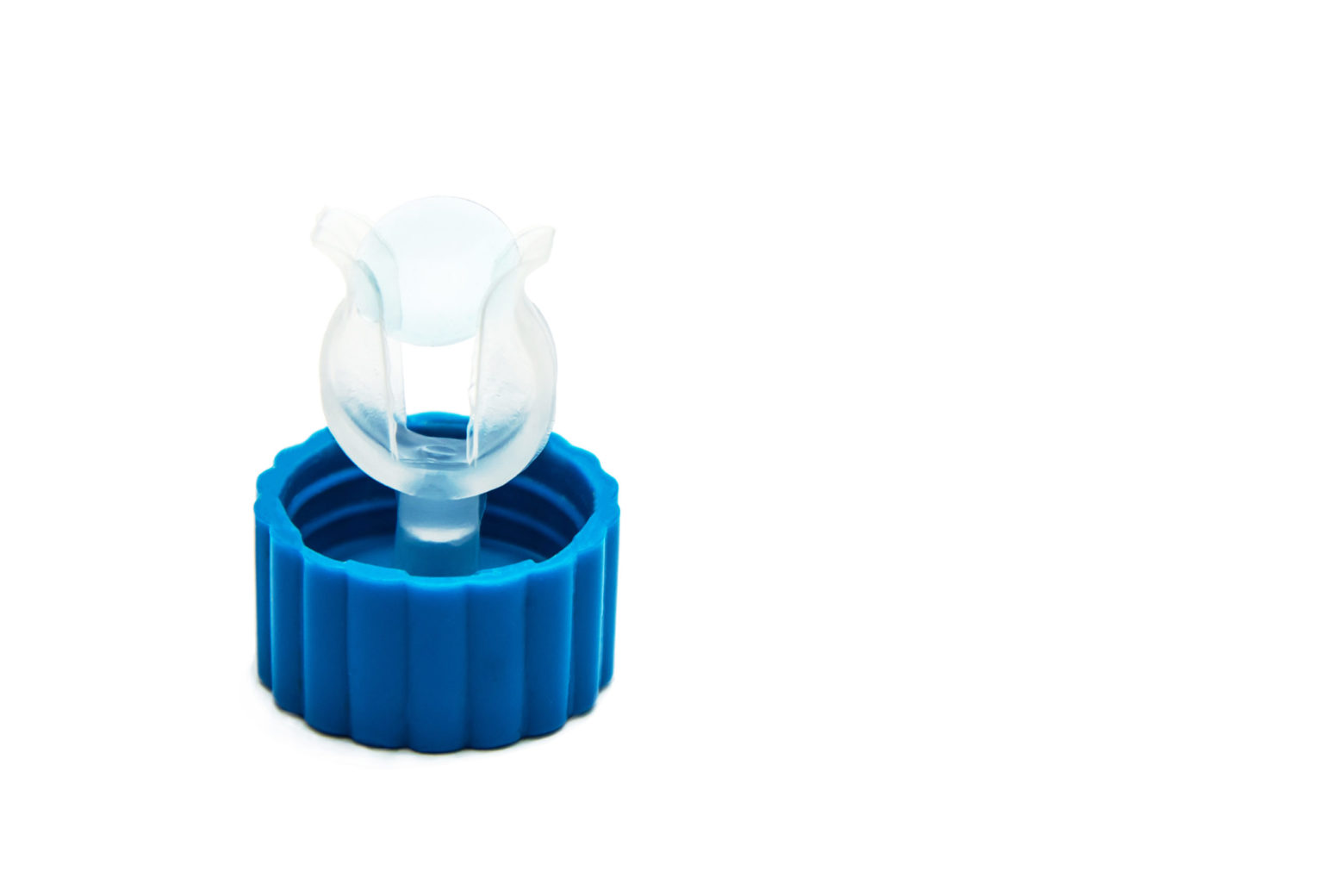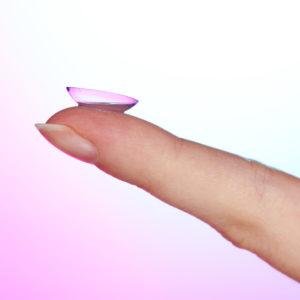
Imagine what it must feel like to tell a patient that you can decrease his or her myopia progression and they would no longer need to wear glasses or contacts during the day. Not only that, but in order to do this they would wear a contact lens at night, much like how some people might wear a retainer to keep their teeth straight. What a way to improve quality of life in such a unique way. This is part and parcel the heart of the orthokeratology.
Orthokeratology (ortho-k) refers to the use of using rigid gas permeable contact lenses to reduce refractive error by reshaping the cornea. They are typically worn overnight, and the patient can go without glasses or contact lenses during the day. In addition, they are a great option for those with an active lifestyle for whom daytime wear of contact lenses would not be a good option.
Although it has been highlighted in the past few years as more companies join the mission to reduce myopia with contact lenses, the first ortho-k lens was created in 1962.1 Dr. George Jessen created his ‘orthofocus’ flat-fitting lenses from polymethyl methacrylate (PMMA). Although they did reduce myopia slightly, they had an unstable fit and did not allow sufficient oxygen to pass through to the cornea. By the late 1970s, new plastic materials were being used for RGP lenses to increase the breathability of the lens, but these still lacked in their effectiveness to significantly correct for myopia.2
The methods of ortho-k have come such a long way since then!
Here’s how modern orthokeratology works, including some of the current designs:
I have no financial interests or affiliation with any contact lens brands or manufacturers to disclose. The content below is designed for informational purposes only.
How does current Ortho-K work for myopia control?
- Orthokeratology lenses will cause the central cornea to become flatter and the mid-peripheral cornea to become steeper. The reason behind how this causes a decrease in myopia varies among researchers, but a commonly agreed upon theory is that it reshapes the cornea to have an oblate curve. This, they believe, leads to myopic defocus in the periphery, which has been shown to have a strong effect on axial elongation of the eye.
- Other studies mention the impact of Ortho-K being due to a change in the lag of accommodation or increased choroidal thickness. However, further studies are needed to confirm these theories.2
How effective has it been demonstrated to be?
- Ortho-K was shown in several individual studies and meta-analyses to reduction the rate of myopic refractive change by 40%-60% when compared to spectacle wearing.2
Who is the ideal candidate for Ortho-K?
- Good candidates include patients who were older at the start of the Ortho-K treatment, older in age of myopia onset, having larger pupils and a smaller central treatment zone due to higher peripheral myopia.2
How safe are orthokeratology lenses?

- This can vary widely when comparing outside vs. inside the United States and Canada, as these two countries tend to have more stringent regulations for contact lenses.
- A 2013 study showed that out of the incidence of microbial keratitis in Ortho-K users was 7.7 per 10,000 patients as opposed to 19.5 per 10,000 patients who wore soft contact lenses overnight.2 In other words, the complications with Ortho-K lenses are very minimal and safe regarding ocular surface compared to soft contact lenses.
What designs are out there and how can I get more involved?
- The two big brands out there are the Paragon Corneal Refractive Therapy (CRT) and the Bausch & Lomb Vision Shaping Treatment (VST).
1) Paragon CRT
- Designs: Comes in Paragon CRT or Paragon CRT Dual Axis (helpful in patients with ≥ to 0.75 D of corneal astigmatism)
- Material: Paragons HDS ® 100 (pafluflocon D, 101 Dk)
- Ideal candidate would fit in the parameters of:
- Power: myopia up to -6.00 and astigmatism up to -1.75
- Diameter: 9.5-12 mm
- Base Curve: 6.5-10.5 mm
- Get certified: You can complete their online certification module for free.
2) Bausch & Lomb Vision Shaping Treatment (VST)
- Designs: BE Retainer, CKR, Contex OK E-System, DreamLens, Emerald, Forge Ortho-K, iSee2, NightMove, MesaGrande, MiracLens, Orthofocus, Super Bridge and E-Lens Overnight Orthokeratology Lens, Vipok, WAVE NightLens
- Material: Boston EQUALENS II (oprifocon A, dk 85)
- Ideal candidate would fit in the parameters of:
- Power: -1.00 to -5.00 D and astigmatism up to -1.50 DC
- Diameter: 9.6-11.6 mm
- Base Curve: 7.30-10.15 mm
- Get certified: All of the designs offer online certification modules for free.
What are some other options for myopia control?
- Myopia control can also be achieved with soft multifocal contact lens options, such as MiSight, which is the first multifocal contact lens that is FDA approved to reduce myopia progression by slowing down the change in spherical equivalent refraction and reducing the rate of axial length elongation.5
- Topical atropine 1% can be an excellent option especially when a child simply cannot be fit with a contact lens. It is a muscarinic antagonist that is nonselective and has been shown to reduce the change in myopia spherical equivalent refraction and axial elongation.6 Further research supported that atropine 0.01% was an acceptable replacement to 1% for the treatment of myopia progression. This is helpful because it has limited side effects compared to atropine 1% and the child does not need to experience blurred vision and dilated pupils which especially in a child makes for a more comfortable and adherable treatment.7
- Decreasing the amount of near work and spending more time outdoors has been shown to reduce myopia progression in school children.8
Orthokeratology is an exciting area of myopia control that can make a huge difference in a patient’s life. While working as a contact lens technician, I saw patients as young as four years old being fit with Ortho-K lenses. When thinking about all the devastating effects that myopia can have on our vision and ocular health, it is amazing that we can reduce the likelihood of adverse outcomes in our patients. With online certification courses, now is the perfect time to learn more about Ortho-K so that you can stand out in clinic and help your future patients.
References:
-
- Dave T, Ruston D. Current trends in modern orthokeratology. Ophthalmic Physiol Opt 1998;18:224–33
- Lipson MJ, Brooks MM, Koffler BH. The Role of Orthokeratology in Myopia Control: A Review. Eye Contact Lens. 2018;44(4):224–30. Epub 2018/06/21. pmid:29923882.
- Three Key Areas Where Paragon CRT ® Contact Lenses Make an Impact [Internet]. Paragon Vision, LLC. 2020. Available from: https://ecp.paragonvision.com/products/crt
- Vision Shaping Treatment (VST) Process [Internet]. Bausch & Lomb Incorporated. 2020. Available from: https://www.bausch.com/ecp/our-products/orthokeratology/vision-shaping-treatment
- Chamberlain P, Peixoto-de-Matos SC, Logan NS, Ngo C, Jones D, Young G. A 3-year Randomized Clinical Trial of MiSight Lenses for Myopia Control. Optom Vis Sci. 2019;96(8):556-567.
- Chua WH, Balakrishnan V, Chan YH, et al. Atropine for the treatment of childhood myopia. Ophthalmology. 2006;113(12):2285-2291.
- Chia A, Chua WH, Cheung YB, et al. Atropine for the treatment of childhood myopia: safety and efficacy of 0.5%, 0.1%, and 0.01% doses (Atropine for the Treatment of Myopia 2). Ophthalmology. 2012;119(2):347-354.
- Yi JH, Li RR. [Influence of near-work and outdoor activities on myopia progression in school children]. Chinese Journal of Contemporary Pediatrics. 2011 Jan;13(1):32-35.

